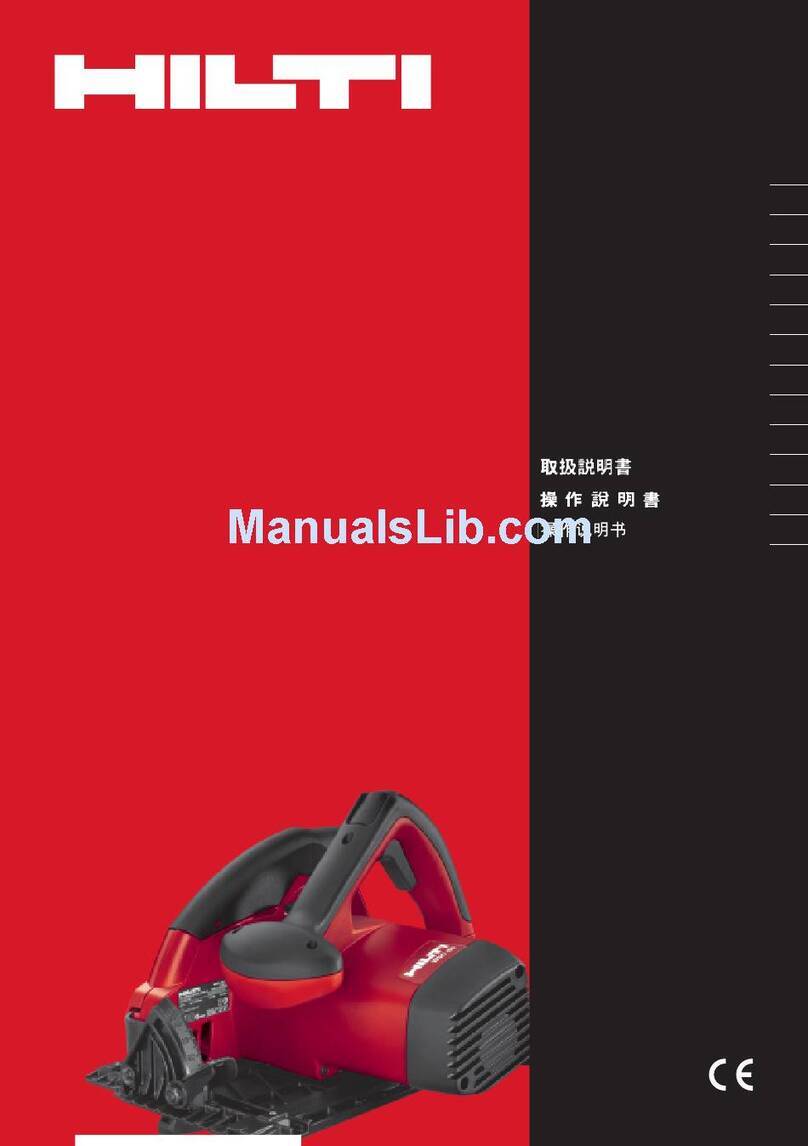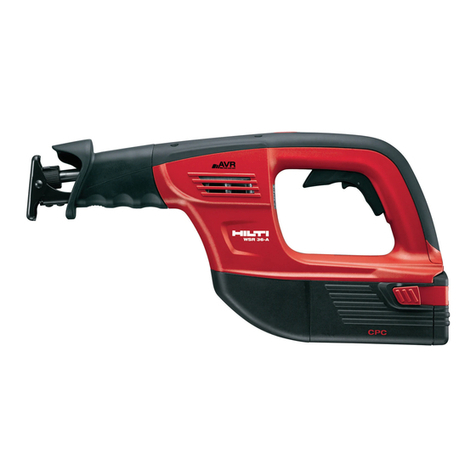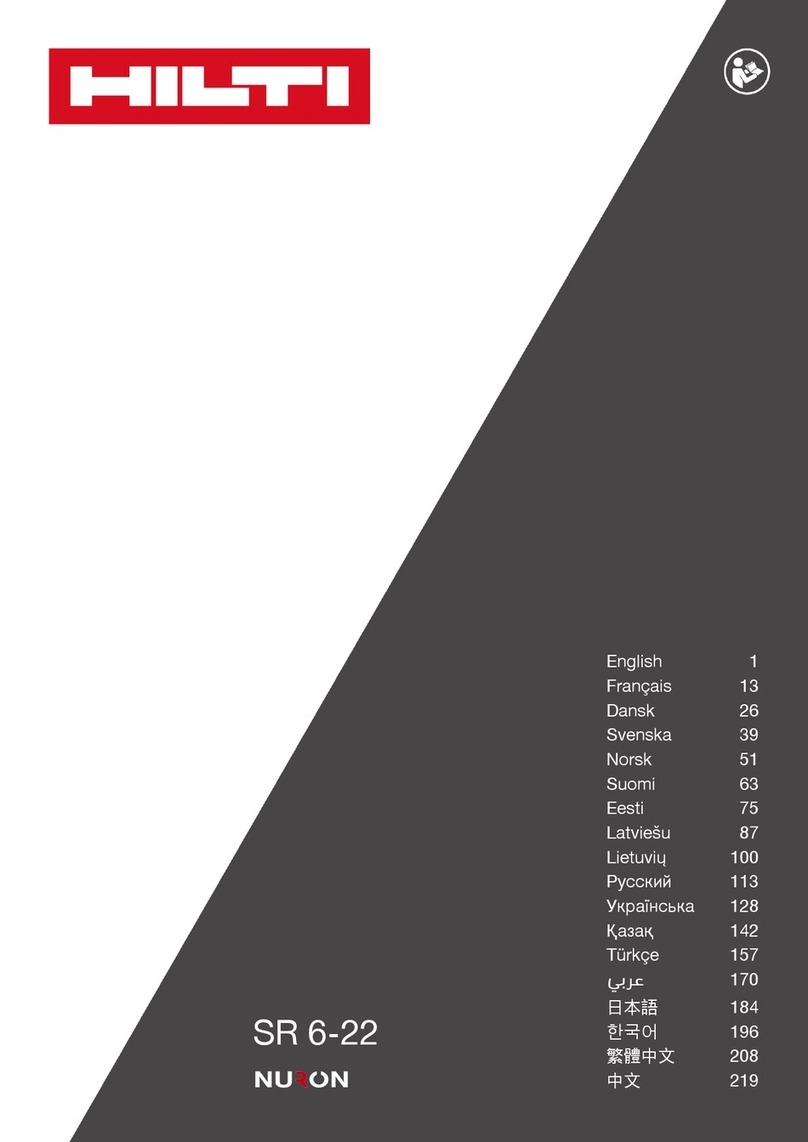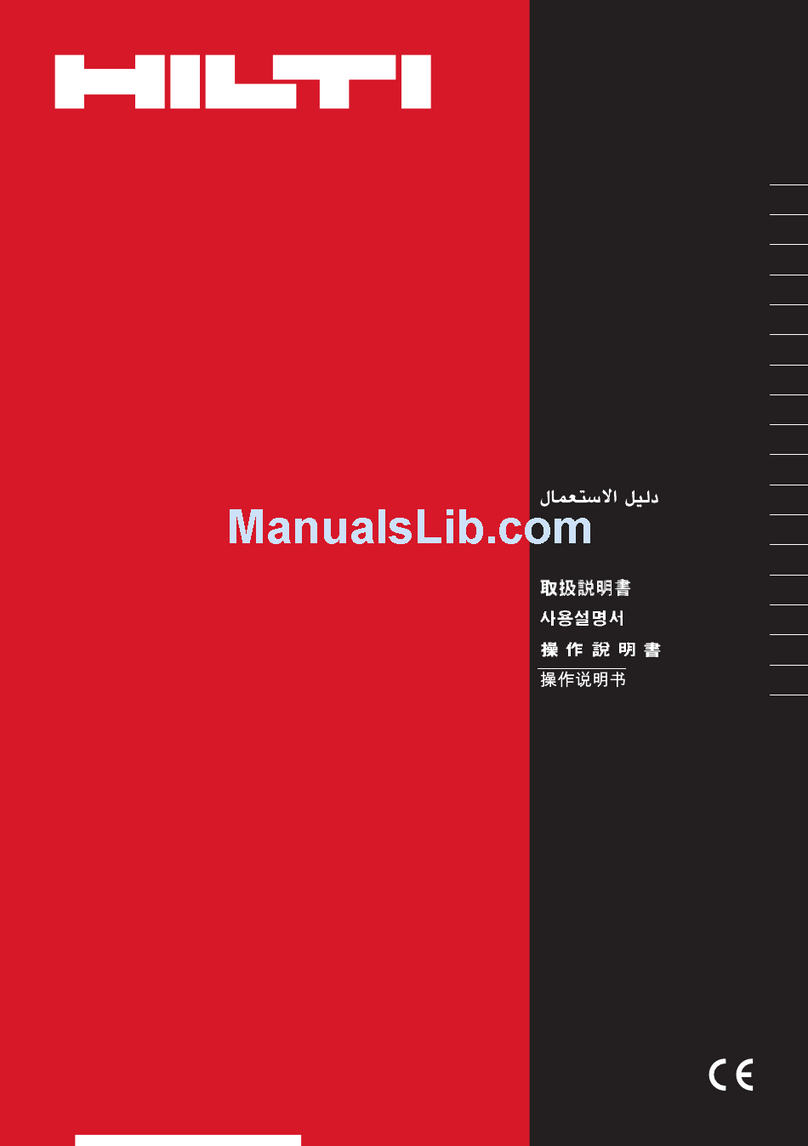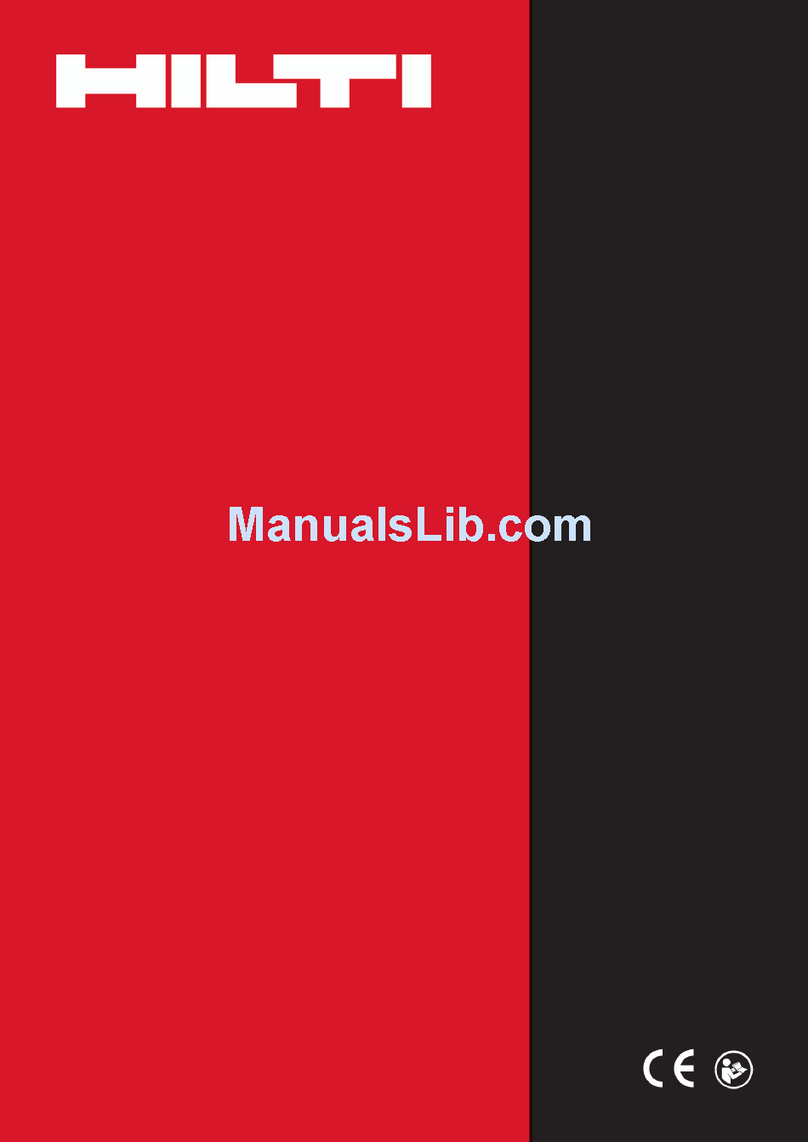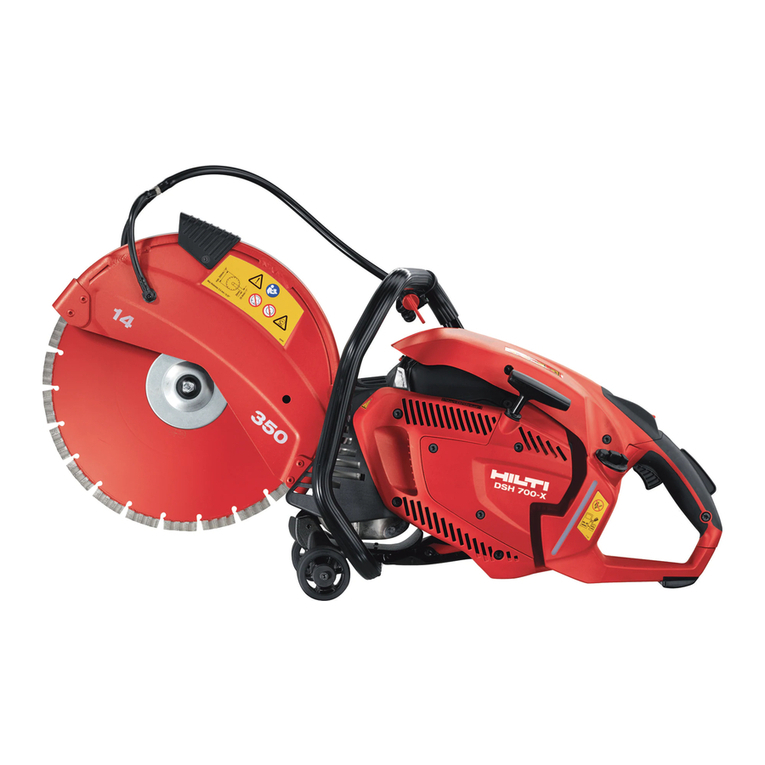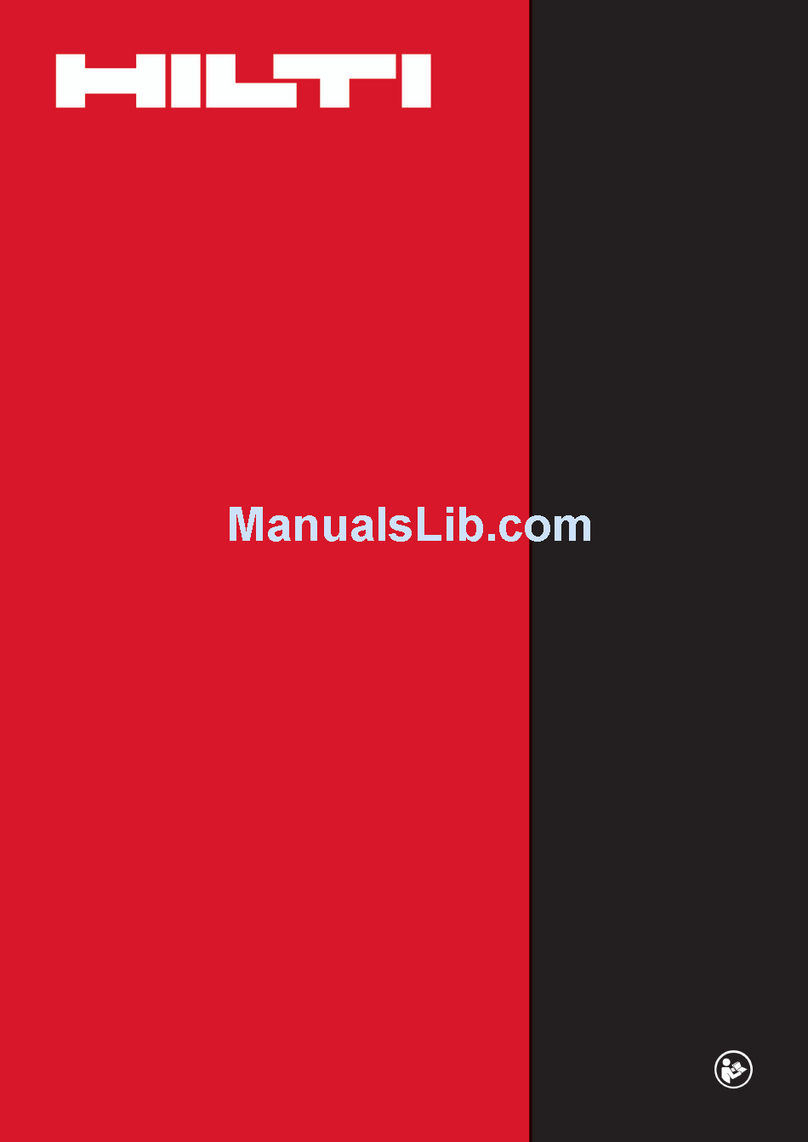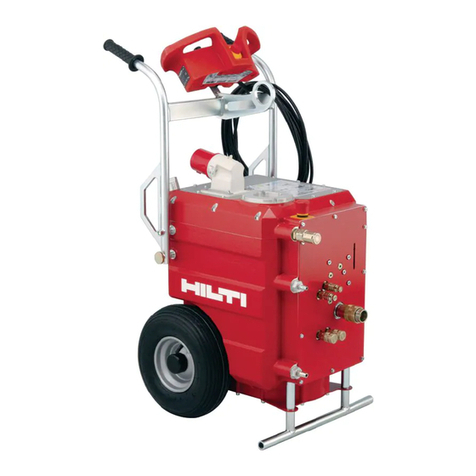
b) When blade is binding, or when interrupting a
cut for any reason, release the trigger and hold
the saw motionless in the material until the blade
comes to a complete stop. Never attempt to re-
move the saw from the work or pull the saw back-
ward while the blade is in motion or kickback
may occur. Investigate and take corrective actions
to eliminate the cause of blade binding.
c) When restarting a saw in the workpiece, centre
the saw blade in the kerf and check that saw
teeth are not engaged into the material. If saw
blade is binding, it may walk up or kickback from the
workpiece as the saw is restarted.
d) Support large panels to minimise the risk of blade
pinching and kickback. Large panels tend to sag
under their own weight. Supports must be placed
under the panel on both sides, near the line of cut
and near the edge of the panel.
e) Do not use dull or damaged blades. Unsharpened
or improperly set blades produce narrow kerf causing
excessive friction, blade binding and kickback.
f) Blade depth and bevel adjusting locking levers
must be tight and secure before making cut. If
blade adjustment shifts while cutting, it may cause
binding and kickback.
g) Use extra caution when sawing into existing walls
or other blind areas. The protruding blade may cut
objects that can cause kickback.
2.2.3 Safety instructions for circular saws with
pendulum guard
Lower guard function
a) Check lower guard for proper closing before each
use. Do not operate the saw if lower guard does
not move freely and close instantly. Never clamp
or tie the lower guard into the open position. If saw
is accidentally dropped, lower guard may be bent.
Raise the lower guard with the retracting handle and
make sure it moves freely and does not touch the
blade or any other part, in all angles and depths of
cut.
b) Check the operation of the lower guard spring.
If the guard and the spring are not operating
properly, they must be serviced before use. Lower
guard may operate sluggishly due to damaged parts,
gummy deposits, or a build-up of debris.
c) Lower guard may be retracted manually only for
special cuts such as “plunge cuts” and “com-
pound cuts.” Raise lower guard by retracting
handle and as soon as blade enters the mater-
ial, the lower guard must be released. For all other
sawing, the lower guard should operate automatic-
ally.
d) Always observe that the lower guard is covering
the blade before placing saw down on bench or
floor. An unprotected, coasting blade will cause the
saw to walk backwards, cutting whatever is in its
path.Beawareofthetimeittakesforthebladeto
stop after switch is released.
2.3 Additional safety instructions
2.3.1 Personal safety
a) Modification of the machine or tampering with its
parts is not permissible.
b) Wear ear protectors. Exposure to noise can cause
hearing loss.
c) Breathing protection must be worn if the power
tool is used without a dust removal system for
work that creates dust.
d) Do not operate the power tool without the pro-
tective devices that belong to it.
e) Improve the blood circulation in your fingers by
relaxing your hands and exercising your fingers
during breaks between working.
f) Switch the power tool on only after bringing it into
position at the workpiece.
g) Always guide the power tool away from your body
when working with it.
h) Do not work with the power tool overhead.
i) Do not attempt to brake the tool by applying
lateral pressure to the saw blade as this may
cause kickback.
j) Do not touch the clamping flange, the clamping
screw or the saw blade while the power tool is
running.
k) The kerf must be free of obstructions. Do not saw
into screws and nails etc.
l) Never press the drive spindle lock button while
the saw blade is rotating.
m) Never direct the power tool toward persons.
n) The appliance is not intended for use by debilit-
ated persons who have received no special train-
ing. Keep the appliance out of reach of children.
o) Adjust the forward pressure applied to the tool
according to the saw blade used and the material
to be cut, so that the blade doesn’t stall.
p) Avoid overheating the tips of the saw blade teeth.
q) When cutting plastics, melting of the plastic
should be avoided.
r) In the event of any damage to the power tool or
blade, disconnect the supply cord plug from the
power outlet immediately. Do not operate the tool
when parts are damaged or when the controls do
not function correctly. If necessary, have the tool
repaired at an authorized Hilti service center.
s) Working on the material may cause it to splinter.
Wear eye protection and protective gloves. Wear
breathing protection if no dust removal system is
used. Splintering material presents a risk of injury to
the eyes and body.
t) Before beginning the work, check the hazard clas-
sification of the dust that will be produced. Use
an industrial vacuum cleaner with an officially
approved protection classification in compliance
with locally applicable dust protection regula-
tions.
u) Dust from materials, such as paint containing lead,
some wood species, concrete / masonry / stone con-
taining silica, and minerals as well as metal, may be
harmful. Contact with or inhalation of the dust may
en
4
Printed: 21.05.2015 | Doc-Nr: PUB / 5223412 / 000 / 02

